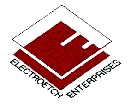 |
Brief History of ElectroEtch |
| SUMMER 1989 : First Experiments with anodic etching with zinc and zinc sulfate at
12 volts. Gases were generated and the etch was too rapid and too strong.
SEPTEMBER 1990: First Patent Application Filed MARCH 1991: Disclosure of basic principles of ElectroEtch including Electron micrographs showing differential crystal structure (Microtint) in "Environmentally safe etching", ChemTech 21, #4, 210 (1991) APRIL 1992: Grant of US Patent 5 102 520 MAY 2, 1992: US Patent 5 102 520 designated "patent of the week" by New York Times MAY 12 1992: Grant of US Patent 5 112 453 SUMMER 1992: Publication of article "Environmentally Safe Etching" in Journal of the Print World. Discovery of Edge Focus Effect: The etching is intensified at plate edges, ground edges and lines previously etched very close together. This allows range of tones by open biting these areas. OCTOBER 1992: Exhibition of ElectroEtch prints at B.Beemesderfer Gallery, Highland Park NJ
JANUARY 1993: Publication of "Etching and Tone Creation Using Low-Voltage Anodic Electrolysis", Leonardo 25, #1, 53,(1993) showing art work MAY 1993: Award of Charles A. Lindbergh Grant in Arts and Humanities. During this time we studied the mechanism of the process. At very low voltages not only does the metal dissolve from the plate, but tiny particles peel off the surface. This is how Microtint happens. We created a series of lines, which, except for a "glitter" that showed up on the etched metal surface, looked very similar to their counterparts etched in 1 to 20, 1 to 12 and 1 to 8 acid. JUNE 1993: Created a mezzotint like surface by pole reversal. Print created by Don Furst of U.of N.Carolina Made Xerox transfers and etched using the transferred image as resist SPRING 1994: Publication of "Electroetch, a safe etching system", JUNE 1994: The Lindbergh Foundation Board was presented with a portfolio containing 50 comparison plates, including layered images, cross hatching, capturing fine textures with soft ground, creating wide varieties of tones from white to rich black, using ink as well as touche, crayons, permanent markers, oil sticks and litho pencils as resists, and needles, screwdrivers, nails and sticks to penetrate through ink. JULY 1995: Purchase by Smithsonian Institution of portfolio of 50 plates showing comparison between acid and ElectroEtch. This porfolio was prepared during the Lindbergh Grant FALL 1995: ElectroEtch Print wins prize at Annual Audubon ArtistsShow in New York WINTER 1995: Publication of Electroetch II Printmaking Today 4, #4, 24 (1995). FEBRUARY 1998: ElectroEtch Print shown in Annual Show of National Gallery Museum, New York. JUNE 1998: One Person Show of ElectroEtch prints at Hunterdon Museum of Art, Clinton, N.J. DECEMBER 1998: "Setting the record straight", Printmaking Today 7, #4, 31 (1998). 1997-1998: Numerous other recognized artists have worked with ElectroEtch at our studio. They include Mohammad Khalil, the late Robert Conover, Linda Cummings and Gregory Niemeyer. Visit the Art Gallery and see what has been achieved. |
Built and maintained by NjTek Inc.